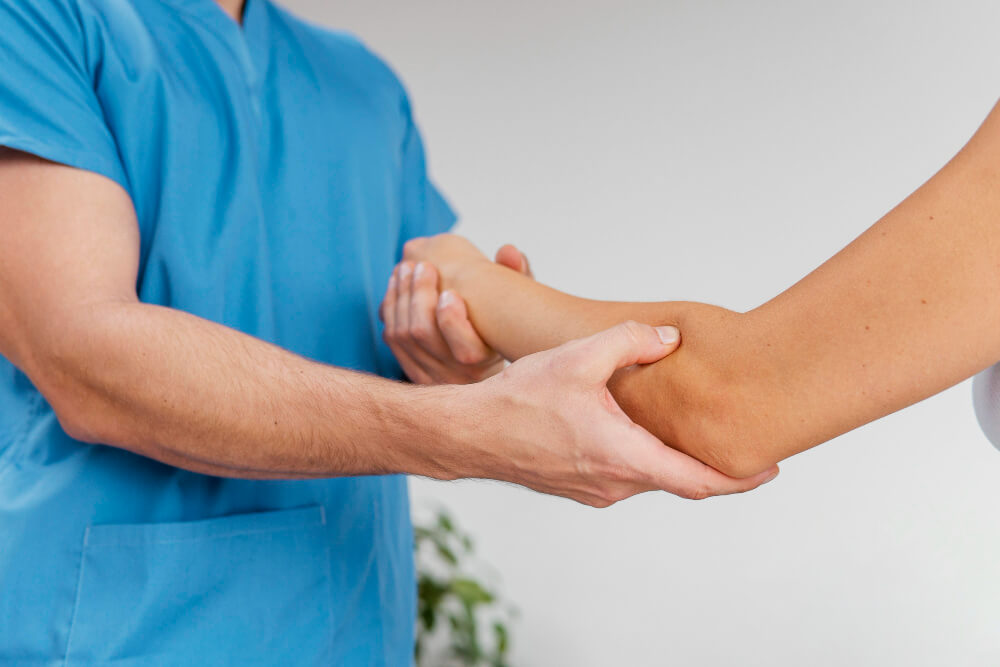Knee pain: Understanding Osteoarthritis and Your Treatment Options
Our knees, the hinges that carry us through life, can sometimes betray us with a persistent ache. This pain, often attributed to “old age,” may actually be whispering a different story: the story of osteoarthritis (OA), a common degenerative joint disease. While mainly affecting older adults, OA can strike at any age, impacting millions worldwide and significantly impacting quality of life.

Unmasking the Culprit: How Osteoarthritis Affects Your Knees
Osteoarthritis is a gradual breakdown of the cartilage, the smooth cushioning surface that protects our bones and allows for pain-free movement. In the knees, this breakdown leads to:
- Thinning and fraying of cartilage: This exposes the underlying bone, causing friction and pain.
- Bone spur formation: The body attempts to compensate for the lost cartilage by forming bony growths around the joint, further limiting movement and causing stiffness.
- Inflammation of the joint lining: This contributes to swelling, tenderness, and warmth in the knee.
The Symphony of Symptoms: Recognizing Knee OA
While knee OA can present differently, some common symptoms include:
- Aching pain: A dull, persistent pain that worsens with activity and improves with rest.
- Stiffness: Difficulty bending and straightening the knee, especially in the morning or after prolonged sitting.
- Cracking or popping sounds: A grinding or clicking sensation when moving the knee.
- Swelling and warmth: Visible swelling and increased skin temperature around the joint.
- Weakness and instability: Difficulty walking or climbing stairs due to weakened muscles surrounding the knee.
Facing the Challenge: Treatment Options for Knee OA

The good news is that knee OA doesn’t have to dictate your life. Various treatment options can help manage pain, improve function, and slow disease progression:
Lifestyle Modifications: The First Line of Defense
- Weight management: Maintaining a healthy weight significantly reduces pressure on the knee joint.
- Exercise and physical therapy: Low-impact exercises like swimming, cycling, and yoga strengthen muscles and improve joint flexibility.
- Assistive devices: Using canes or braces can provide support and stability, reducing pain and falls.
- Heat and cold therapy: Applying ice packs or heat pads can help manage inflammation and pain.
Medication Melodies: Relieving the Ache
- Over-the-counter pain relievers: Nonsteroidal anti-inflammatory drugs (NSAIDs) like ibuprofen and naproxen can help manage pain and inflammation.
- Prescription medications: stronger pain relievers or topical gels may be necessary in some cases.
- Corticosteroid injections: Injections into the joint can provide temporary pain relief and reduce inflammation.
Surgical Solutions: When Conservative Measures Don’t Suffice
- Arthroscopy: Minimally invasive surgery to remove bone spurs or repair damaged cartilage.
- Osteotomy: Reshaping the bones around the knee to improve joint alignment and reduce pressure.
- Joint replacement: In severe cases, replacing the damaged knee joint with a prosthetic one may be necessary.
Living Beyond the Ache: Managing Knee OA for a Fulfilling Life
OA may be a chronic condition, but it doesn’t have to define you. By understanding the disease, actively managing symptoms, and seeking professional guidance, you can live a fulfilling life. Remember:
- Early diagnosis and intervention are crucial.
- A personalized treatment plan is key.
- Staying active and maintaining a healthy lifestyle are essential.
- Support systems and community resources are invaluable.
Conclusion:
Knee OA may cast a shadow on your mobility, but with awareness, proactive management, and the right support system, you can regain control and live a life full of movement and joy. Don’t let the ache in your knees dictate your journey; embrace the tools and resources available, and move forward with confidence.
